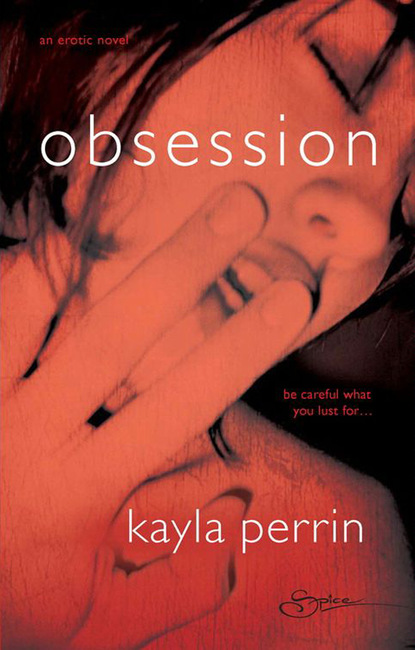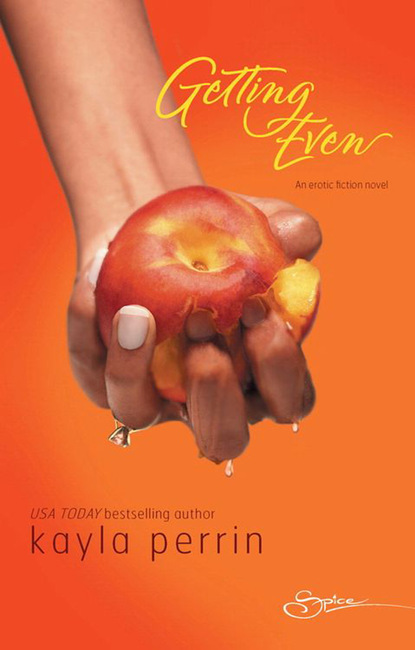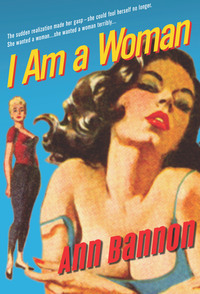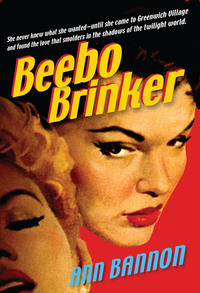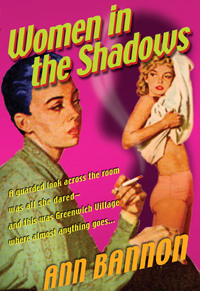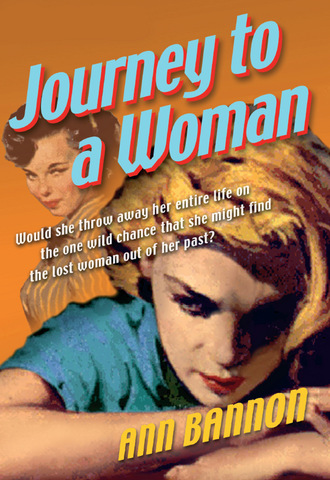
Полная версия
Journey To A Woman

Journey to a Woman
Ann Bannon

www.spice-books.co.uk
MILLS & BOON
Before you start reading, why not sign up?
Thank you for downloading this Mills & Boon book. If you want to hear about exclusive discounts, special offers and competitions, sign up to our email newsletter today!
SIGN ME UP!
Or simply visit
signup.millsandboon.co.uk
Mills & Boon emails are completely free to receive and you can unsubscribe at any time via the link in any email we send you.
Table of Contents
Cover
Title Page
Introduction
I. Foreword/Forward
II. Personality Portraits
III. The Partying
IV. Afterword/Afterward
Chapter One
Chapter Two
Chapter Three
Chapter Four
Chapter Five
Chapter Six
Chapter Seven
Chapter Eight
Chapter Nine
Chapter Ten
Chapter Eleven
Chapter Twelve
Chapter Thirteen
Chapter Fourteen
Chapter Fifteen
Chapter Sixteen
Chapter Seventeen
Chapter Eighteen
Chapter Nineteen
Chapter Twenty
Chapter Twenty-One
Chapter Twenty-Two
Chapter Twenty-Three
Endpages
Copyright
Introduction
I. Foreword/Forward
When these stories of lesbian love were forged nearly half a century ago, I thought—I knew—that I was writing ephemeral literature for a casual audience. That was what was being asked of me, and what I tried to do. I had no fine ideas of recording the saga of a community, nor that these stories would come to have real sociological or historical value. Quite truly, I had no thought that I was preserving a slice of GLBT history that would help to form the perceptions of the era for succeeding generations. I thought I had been given the opportunity to write popular throwaway tales for an avid, if fleeting audience, and that was quite enough. I would write them the very best I could, understanding from the beginning that the first one would be forgotten even as the second was being written. I had not the slimmest sliver of recognition that what I was really given was the opportunity to speak for my generation of young gay and lesbian people.
It is interesting to speculate as to whether or not such knowledge would have destroyed these books. It would have made them more carefully crafted, but also immeasurably more cautious. It very likely would have made them self-conscious and defensive, as well. Instead, they are fully flawed and full of life. It’s a trade off, and on the whole, perhaps for the best. All I can say now to the wonderful young people who power our amazing community is, “Thank you for caring about these stories. Take what you can, learn what you can, and know that they flowed uncensored from the imagination of a girl in her twenties, sitting alone by a typewriter and dreaming up a life she wanted to share with you. Bless you for being there to read about it.”
When it was suggested to me that I write introductions to most of the new Cleis Press editions of my books, it sent me back to reread the original stories. It also propelled me back in time. It had been over twenty years, dating to the Naiad editions of the early 1980s, since I had immersed myself in them. And twenty-five years before that when the actual writing had been accomplished.
Perusing my novels again was a trip in a time machine, an exercise both embarrassing and exhilarating. How very young I was! How deep those feelings ran! And how startlingly sparse was my worldly knowledge. All of the books were completed and in print before I was thirty years old. And now in my sixties, I resisted going back to visit them again. But the rereading was essential. As George Santayana is supposed to have said, “How do I know what I think till I see what I said?”
As I reacquainted myself with my authorial life and times, several themes seemed to emerge and to run like threads through all of the books. There is not room to analyze all of them here, but one or two stand out. The first is the emotional development and personality portraits of the characters themselves; the sheer punch of the interior drama, that so fascinated me. I wanted to follow them and discover how the characters connected to one another, why they chose the partners they did. The other was the symbolic use of liquor and cigarettes as the banners of liberation. I’d like to look at these themes as they apply to Journey to a Woman.
II. Personality Portraits
Not everybody likes to travel, but almost everybody loves a journey of self-discovery, especially if it leads to the uplands of love. This book is an odyssey from sorrow to sunshine; from the drama and heartache of breakup to the astonishment of passion. If the preceding book, Women in the Shadows, was a story of breaking away from smothering relationships and claiming the right to define yourself (even if you got it wrong, be it said!), Journey to a Woman is more about achieving youthful maturity, coming to terms with who you really are. It’s about what happens to three strong, beautiful women when one of them—Beth—rediscovers her passion for another—Laura—only to fall headlong into the arms of the third—Beebo Brinker herself.
When I first started writing these books, I was a woman in love—not just with a few individuals, but with a whole community, the entire world full of wonderful women and endearing gay men. I idealized them all. I was in love with being in love with them. They could do no wrong in my eyes. But time went by. I listened, I watched and learned. I was also doing my own growing up and having to accept, book by book, that people aren’t perfect—fascinating and lovable but not flawless. I had to include myself in that “not-flawless” category, too.
People have asked if I am the Beth in these stories. I am reminded of the response Gustave Flaubert gave when he was asked the identity of Madame Bovary. “Madame Bovary,” he replied calmly, “is me. Madame Bovary, c’est moi.” The French have been scratching their heads and repeating the phrase ever since. But Flaubert had hit on something. For any writer, all of our various characters are “us” when we create them. I have always responded that Beth was based, physically and socially at least, on a former sorority roommate who inspired lust in many hearts, more than one of them womanly. That said, however, perhaps it is fair to allow that there is a lot of me in Beth, and a lot of her problems are the ones I was wrestling with in my twenties, especially the awkward relationships, skewed by chaotic, unsorted emotions. Beth was a woman who needed women, heart and soul, and didn’t know how to give herself permission to reach out to them. We differed most in two ways: she spoke out to her husband about her fears and misgivings while I swallowed mine. And she was dubious about her feelings for her children while I was passionately attached to mine.
So Beth was vulnerable when the lovely but dangerous and fatally wounded Vega crossed her path. We have all had the experience she had: a first breathtaking glimpse of a bewitchingly beautiful human being, and perhaps even the pleasant shock of seeing a responsive spark in that person’s eyes. But after you bring them home you find something scary under the irreproachable veneer. They are hurt and want to hurt someone back; they need you to fix them, while you need them for love. They don’t have it to give, and you can’t supply the fix. It’s a match made in purgatory. What to do? This is where you learn fast how rocky saying goodbye can be.
There was a woman living near me in Southern California who served as the original of Vega Purvis. She was handsome, sleek and chic, witty, and, in Edward Arlington Robinson’s apposite phrase, “imperially slim.” She could be endearingly funny about her physical ills, in a way that made you want to cuddle and comfort her. It was Vega herself who described her abdominal scars as resembling a ball of yarn tangled up by a kitten. But she carried a freight load of psychological damage everywhere with her, and it gave her a mercurial temperament. I could never wait to spend time with her, and never wait to get away home.
My fictional Vega was also a woman whose prejudices reflected almost perfectly those of her homophobic family, and yet who broke out of that box from time to time. Her forays were thrilling, risky, and ultimately disastrous, as Beth discovered. But they do bespeak the strength of that drive to find and possess and yes, love, one of your own. And always, in that era and even now, there were perplexed and resistant men hovering in the background—impatient husbands or brothers or uncles, wondering why their influence doesn’t sweep away such treacherous notions from their women’s heads.
Some women take refuge behind a man, as Laura did, and some men behind a woman, as did Jack Mann in this tale. Laura never gave up her delight in women, and they remained the romantic joy of her life. But she wanted children and so did her supportive and affectionate best gay friend, Jack. They made common cause to provide a home for their child and a facade of respectability each for the other, a sort of honorable camouflage to shield them from the ostracism of their social circle.
Knowing none of this, and running almost as much from Vega as Charlie, Beth arrives in New York obsessed with tracking Laura to earth and virtually devouring her with the resurgent sexual excitement she thought she had forever abandoned with her marriage. And when, in her search, she runs into the provocative and manipulative writer, Nina Spicer, who leads her to Beebo Brinker, the stage is set for a fiery intersection of different personalities, conflicts, and clashing needs. And ultimately, of course, for resolution in love. (These were the pulps, after all!)
III. The Partying
So many of us in that tough age, whatever our social class, grew up thinking we had to be what our parents and society told us to be: “nice girls,” “good girls.” We had no notion that we could give ourselves permission to “transgress.” Yes, there was too much booze and too much angst. But you know what? We romanticized it all. We really thought that since we couldn’t give ourselves permission to be who we were, the liquor could. At the very least, it relaxed the strictures against marginalized social roles. It let us look at and think about the women we suspected we might truly be with affection, not socially mandated contempt. It was a conspiratorial act when a bunch of handsome, adventurous young women sat down to share a beer and cigarettes. But more than that, we were carrying a flag handed off from our mothers, both straight and gay, claiming autonomy and equality for women. That’s what made the brew and the smokes so appealing. They had a significance for us beyond the mere conviviality they fostered.
Those of us who were young in the 1950s and 1960s have bright memories of mothers who, in their turn, were the “flappers” of the 1920s: the pert girls in the cloche hats, growing up in a prosperous era, flattening their breasts, wearing their hair in “boyish bobs,” and raising their skirts above their knees. The Great War to end all wars was over and the world was throwing a decade-long party. For the first time, women were starting to claim the theretofore masculine privileges of smoking and drinking. It was a way of demanding parity with men, of trying to be taken seriously by donning the trappings of the ruling class. Many of them were playing at this game, but a significant few took it seriously.
And the new advertisements were seductive. A man lights a Chesterfield and his woman companion gazes into the curling smoke. “Blow some my way,” she says. Murad brand, with a not very subtle nod to the ladies, adopts the slogan, “Be Nonchalant—light a Murad.” And here’s the one that got so many women: “Reach for a Lucky instead of a sweet.”
But shockingly, the Great War and the Great Prosperity were followed by the Great Depression. Women were thrust back into their traditional routines of kinder, küche, kirche. In their millions, they broke out the white ruffled aprons and little wash dresses and rediscovered the joys of floor wax and tuna casseroles. Still, they could not forget the brief, exhilarating fling with freedom of a sort. When Prohibition ended in the early 1930s, many young women participated enthusiastically in the afternoon “cocktail hour,” which seems to have entirely replaced the hour for high tea. One expanded one’s wardrobe to include a semi-formal outfit for late afternoons that became known as a “cocktail dress.” That useful article of furniture, the once-and-future “coffee table,” became the “cocktail table.” Fashionable young women drank highballs or bourbon on the rocks, right alongside their mates.
If the men bought the booze, women could share a “wee drop of the creature,” too. My own mother, preparing for her second wedding in 1934, was given that trendiest of bridal parties, a “liquor shower,” including highball glasses, engraved pewter liquor labels on little chains, glass swizzle sticks, and her own personal hammered silver flask, in case she got chilly at a football game. It was the height of young, trendy 1930s urbanity, in the grand style of the charmingly bibulous Nick and Nora Charles—“The Thin Man” and his delectable mate.
When World War II intruded on our lives, for many women, and aside from genuine hardships and losses, it truly was a glimpse of a brave new world. They came out of that experience more changed than the surface serenity and convention of the 1950s would suggest. Cigarettes and liquor had been offered everywhere and to everyone during the war; they were blended in the memory with recreation, rest, relief from stress and fatigue, and just plain fun. Freedom to smoke and drink without the intermediary of a protective male became associated at last, for better or for worse, with a defiance of past constraints on women’s lives. It became, in short, an outward show of independence.
When I arrived in Greenwich Village in the late 1950s, this perception was firmly entrenched and I did not think to question it. There were wonderful women everywhere I looked, and many intriguing gay men. When they gathered to socialize at a Village pub, they enjoyed a smoke, they took a drink, they created a charmed circle. If you wanted to join them, to fit in, you did as they did. If you went a little over the top, they picked you up, dusted you off, spared you the sermons, and took you home to sleep it off on their sofas. You, in time, returned the favor as needed. It was another form of bonding, of “us against the world.”
But a time does come in one’s life when it is prudent to step back from all that seemed fully pellucid in the first enchantment of one’s twenties; a time to take stock and a time to question. I am reminded of Max Ehrmann’s wise and compelling advice: “Take kindly the counsel of the years, gracefully surrendering the things of youth.” (“Desiderata,” 1927). I did, as in good time and with luck, we all must. Finally, for all those who press reproach without understanding, this is just to say how it was for so many of us back then.
IV. Afterword/Afterward
No, I didn’t become an alcoholic. I even stopped smoking in my early twenties and today drink only the occasional, if welcome, glass of wine. And I can reassure you that Beebo and Beth, at the end of Journey to a Woman, made it out happy and intact. How do I know this? Because I know where they are now: sitting on the pages of a manuscript written some years ago and awaiting resurrection and revision. Beth went through a sort of fever dream in extricating herself from her marriage and fashioning a life for herself that differed greatly from the one imagined by a younger Beth in her undergraduate days. It’s often in such a fire that we forge and purify our true identities, and that’s what her journey was all about. Parts of the personal odyssey are daunting and parts of it are brilliantly beautiful, and both reveal us to ourselves as no other experience could. Not everyone has the stomach to take this sort of interior trip. If it were easy, wouldn’t everyone do it? But for survivors, it brings the gift of deeper self-knowledge and a capacity for sweeter and more selfless love of others.
And so, we come to the endpoint in this story. Beth at last meets Beebo, and all sorts of good things start to happen. She has fought her way through the tough stuff and earned the joy, and so, in the earlier tales, had Beebo. I should have written a novel then that pursued them into their life together. Now, I will.
Ann Bannon
Sacramento, California
September 2002
Chapter One
SHE LAY IN THE DARK AND CRIED. SHE LAY CLOSE AND WARM IN her husband’s arms while their breath slowed to normal and their hearts quieted together and she wept silently at his sigh of relief. She had learned to cry without making a sound. It had taken a while but she had had plenty of opportunities to learn. If he caught her crying there was always a terrible scene. He started out by questioning her love and ended by questioning his own manhood.
“Goddamn it, Beth!” he had cried to her once, when they had been married only two months, “If I’m doing it wrong, tell me! How do I know what you want me to do if you don’t tell me? A woman isn’t like a man. I can’t tell if it’s any good for you or not.”
He was blaming her for his own faults of love she thought, and, stung, she snapped back, “What am I supposed to do, give you a play-by-play analysis? Can’t you figure it out for yourself, Charlie? You did well enough before we were married.”
“So did you, before we were married,” he flung at her. He got out of bed, lighted a cigarette in the dark, and sat down on the floor. They could not afford chairs yet, and he didn’t want to share the bed with her for a few minutes. Not until the anger wore off.
“Beth, you’ve got it just backwards,” he said. “Most girls can’t enjoy it until they’re married. Their consciences hurt, or something. They’re afraid they’ll get pregnant. But not you. Not Backwards Beth. The minute we get married it’s no fun anymore. Does love have to be immoral or illegal before you can enjoy it, honey?”
Insulted, she turned her back to him and pulled the covers over her disappointed body. She was afraid to think of what he had just said. It had too much the shape of truth and she had had to work very hard to forget it completely. Charlie finished his cigarette and climbed gingerly back into his place in bed, more chilled by his wife’s behavior than the night vapors.
It had been nine years since the first such quarrel. There had been others, but Beth had learned fast to hide the tears of frustration. True to her contrary nature, there were times when she loved Charlie—if love can be an on-again, off-again affair. And sometimes, when she didn’t expect it, desire sneaked up on her and made the moments in his arms unbearably lovely, the way they had been in college. But that was only sometimes, and sometimes was not enough.
On this night, like so many others, she got up after he had fallen back to sleep and went into the bathroom and washed herself. It comforted her obscurely to tidy herself up this way. And when she went back to bed, she dreamed. Beth dreamed often and vividly.
But tonight it wasn’t a dream like any other. She dreamed of Laura. Just Laura, sitting on the studio couch of the room they had shared in college, looking at Beth and smiling. Laura with her long light hair and periwinkle eyes. Laura, who didn’t know herself until Beth discovered her. Laura, who loved her and who had disappeared from her life like frost from a spring lawn, and who never came back.
That was all. Beth spoke her name, trying to make her answer and explain herself, but Laura only sat and smiled. Beth repeated the name until suddenly she wakened and pressed a hand over her mouth. Had she spoken aloud? But Charlie slumbered undisturbed and she relaxed again, leaning back on her pillow and staring at the dark ceiling.
I haven’t even thought of her for months, she pondered. How strange. It’s been years since I dreamed of her. I’d half forgotten. I wonder how she is … where she is. In Chicago with her father, I suppose. He always ruled her life like a tyrant. She wouldn’t have married, of course.
In the morning she told Charlie, “I dreamed of Laura last night.”
“Oh?” He looked up from the financial page of the paper. He spoke casually enough, although he stiffened inwardly. Charlie remembered Laura, too. A man does not easily forget a rival and for a few months, many years ago, when they were all in college, that was what Laura had been. A strange cool girl she was, with a capacity for violent love that Beth had almost accidentally roused. It had only lasted a short while—the space of a semester—and for Beth it had not seemed serious, for she was falling in love with Charlie at the time, and Charlie won her handily. That was when Laura had disappeared.
Beth and Charlie had talked it over, had even tried to help Laura. There was little about the curious affair that Charlie didn’t know; little that he couldn’t forgive. And, it should be added, little about it that he understood.
When he and Beth married he was confident that she would forget it, and to a large extent she had. At first, anyway. She liked men, she was married to one. She had children now and a stable home. Most important in Charlie’s eyes, she had him. And besides, she was a sensible girl. When Laura dropped out of Beth’s life physically, Charlie had faith that she would drop out emotionally as well.
Beth had rarely mentioned Laura over the years, and now, when she spoke of her dream at the breakfast table, it was the first time Charlie had even thought of Laura in over two years. So he was startled, but he didn’t want it to show.
“What was the dream?” he asked.
“Not much. Just Laura, sitting there.”
“Where?”
“That room we had on the third floor at the Alpha Beta house.”
“That’s all?”
“That’s all. Polly, damn it, don’t wipe your fingers on your dress!” Her four-year-old daughter grabbed a paper napkin guiltily.
“Don’t swear at the kids, honey,” Charlie said mildly.
“Don’t scold me in front of them,” she said.
He sighed, feeling a quick hot frustration, a sensation that was much too common for comfort these days, and picked up the paper again. “What else about Laura?” he said.
“Nothing else. Silly dream.”
But it haunted her. And Charlie had a feeling there was more to it than she told him. He kept his eyes on the paper another five minutes and then rose from the table. “Got to get going,” he said. He kissed his two children goodbye and then came around the table behind Beth.



